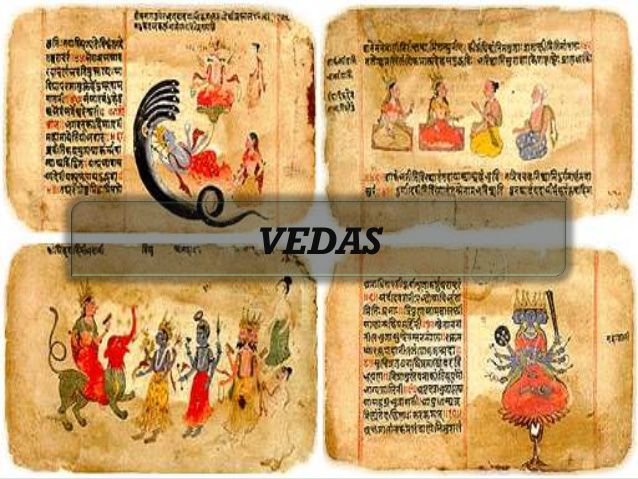

The Aranyakas, “wilderness texts” or “forest treaties”, were composed by people who meditated in the woods as recluses and are the third part of the Vedas. Some Brahmanas contain sections that are Aranyakas or Upanishads in their own right. They were seminal in the development of later Indian thought and scholarship, including Hindu philosophy, predecessors of Vedanta, law, astronomy, geometry, linguistics (Pāṇini), the concept of Karma, or the stages in life such as brahmacarya, grihastha and eventually, sannyasi.

The Brahmanas hold the view that, if expressed correctly, the texts will not fail. Whereas the Rig Veda expressed uncertainty and was not dogmatic, the Brahmanas express confidence in the infallible power of the mantras. The Brahmanas are glosses on the mythology, philosophy and rituals of the Vedas. They may also include the Aranyakas and Upanishads. The Brahmanas may either form separate texts or can be partly integrated into the text of the Samhitas.

Each of the Brahmanas is associated with one of the Samhitas or its recensions. The Brahmanas are prose texts that discuss, in technical fashion, the solemn sacrificial rituals as well as comment on their meaning and many connected themes. Its purpose was liturgical, as the repertoire of the Udgatr or “singer” priests who took part in the sacrifice. Like the Rigvedic stanzas used in the Yajurveda, the Samans have been changed and adapted for use in singing. The Sama Veda also known as the Sama Samhita consists of stanzas, taken almost entirely from the Rigveda. Each action was accompanied by supplicative or benedictive formulas (yajus), drawn from the Yajurveda. According to Monier-Williams, the adhvaryu “had to measure the ground, to build the altar, to prepare the sacrificial vessels, to fetch wood and water, to light the fire, to bring the animal and immolate it,” among other duties. The priest who was versed in Yajur Veda was known as Adhvaryu and it was in charge of the physical details of the sacrifice. Important deities like Indra, Varuna and Rudra are mentioned in the Yajur Samhita. Its purpose was practical, in that each mantra must accompany an action in sacrifice but, unlike the Samaveda, it was compiled to apply to all sacrificial rites. It is a collection of archaic prose mantras and also in part of verses borrowed and adapted from the Rigveda. The Yajur Veda also known as the Yajur Samhita contains the mantras needed to perform the sacrifices of the Veda. The hotr was the reciter of invocations and litanies and played a very leading role in the sacrifices. The priest presiding over the sacrifice well versed in eth Rg Veda was called the Hotr. They contain religion, philosophy, mythology and poetry of the early vedic period. The Rig veda also known as Rg samhita contains mantras and hymns dedicated to the Rg Vedic Dieties. In all, the whole Veda is thus divided into one thousand one hundred and eighty recensions. The Rig-Veda is divided into twenty-one sections, the Yajur-Veda into one hundred and nine sections, the Sama-Veda into one thousand sections and Atharva-Veda into fifty sections. The Yajur-Veda is again divided into two parts: The Sukla Yajur-Veda and the The Krishna Yajur-Veda. They are four in number: The Rig-Veda, The Yajur-Veda, The Sama-Veda and The Atharva-Veda. Samhitas are a collection of metrical poems comprising prayers, hymns and incantations addressed to various deities, both subjective and objective. The corpus of the Vedas include Samhitas, Brahmanas, Aaranyakas and the Upanishads. This is reconstructed as being derived from the Proto-Indo-European root *u̯eid-, meaning “see” or “know”. The Sanskrit word véda “knowledge, wisdom” is derived from the root vid- “to know”. Since they are supposed to have been directly revealed, they are called Sruti (“what is heard”), distinguishing them from other religious texts, which are called Smriti (“what is remembered”) like the Laws of Manu and the Puranas.

Rishis were only the spiritual discoverers of the thought and not the authors of the Veda. They are believed to be the seers of Mantra or thought. The Vedas are considered to be the eternal truths revealed by God to the great ancient Rishis of India. These are direct intuitional revelations and are held to be Apaurusheya or entirely superhuman, without any author in particular. Vedas are a large body of text composed in Ancient India in Vedic Sanskrit.


 0 kommentar(er)
0 kommentar(er)
